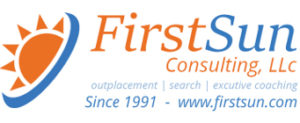#Leadership : Secrets of the Most #ProductivePeople -The Best Way to Use All those 5 Minutes of #Downtime Every Day…When you Have a Few Spare Minutes During the Day, you Probably Default to Checking Email. Here are More #ProductiveWays to use “Found Time.”
Whether your meeting ended early or that project didn’t take as long as you thought, chances are you’ve got some found time on your hands at some point during the day. If you’re like most people, you default to checking email. If you had a system in place, however, you could use those unexpected minutes to get something done, says productivity consultant Leslie Shreve, founder and CEO of Productive Day.
“Most people don’t know how to jump in and take advantage of time because nothing is prepared and sitting in front of them,” she says. “The key is to proactively plan for those five-, 10-, or 15-minute bits of time that often appear throughout the average workday.”
And there are a lot of them. A study by the staffing firm OfficeTeam found that the average employee squanders 56 minutes every day, which adds up to nearly five hours a week that could be used on meaningful work.
START WITH AN INVENTORY
We’re not being proactive with our time because we’re managing tasks from paper to-do lists, emails, voicemails, conversations, notes, files, and ideas. “Those are tools; not systems,” says Shreve.
What’s necessary is a master list, or inventory, of all of your tasks. Shreve likens it to creating a mission control. Bigger than a brain dump, she suggests going around your desk and recording all of your tasks and projects. Look at files and papers on your desk: Things that are left out are often done so as reminders of what needs to be done, she says. As you note action items, you build your task inventory.
“You have to take time in your busy day to do this, but it can help you save a lot of time in the end,” says Shreve. “To make progress on meaningful work you need small action steps. You cannot get progress without project management. Unless you’re prepared, things will be lost or forgotten.”
Tasks should be small, Shreve says, only reflecting the first action step to get something started, or the next action step to keep something moving forward. “These small but powerful steps can move multi-step tasks, projects, and initiatives forward consistently and with ease,” she says.
Use a digital system, such as a spreadsheet, to record your full inventory of tasks—everything you need to do, no matter the source of the task or when action will take place. A paper to-do list needs to be completed, while a digital list is a system, says Shreve. With all your tasks in one system, you can plan and prioritize for certain days, weeks, and months into the future.
When you have found time, check your inventory and find a task that fits. For example, five minutes is enough time to make a phone call that you know will go to voicemail, schedule an appointment, or knock out a quick action step that will keep a priority or a project moving forward.
“Having an inventory of all tasks in one system allows you to make smart decisions about how to use your time, because all tasks are documented and ready for action,” says Shreve. “You can easily become more proactive and less reactive throughout the day.”
PLAN YOUR DAY
An inventory of tasks also helps you plan your day. When you get to work in the morning, check your task list and get to work. Looking at your inventory, priorities often bubble to the top, and Shreve suggests choosing four to seven items to do that day.
“You can always change it, and make it reflect what you really want or need to do that day,” says Shreve. “Your day and task list is never static.”
Working without a system is like grocery shopping; it’s easy to miss items because there’s often no order to the layout of the store, says Shreve. “You only buy the items you can find or that are in front of you,” she says. “Similarly, you can only do the tasks that you know about or see in your vision, and if you don’t have time to check 10 different places for the possibilities, something will be missed.”
MINUTES DRIVE RESULTS
While they seem inconsequential in the moment, those small amounts of time are essential for achieving results. “Inner work life matters for companies because, no matter how brilliant a company’s strategy might be, the strategy’s execution depends on great performance by people inside the organization,” write Harvard Business School professor Theresa Amabile and development psychologist Steven Kramer in their book The Progress Principle. “When progress happens in small steps, a person’s sense of steady forward movement toward an important goal can make all the difference between a great day and a terrible one.”
Knowing what’s possible allows you to take action on the most important tasks at the right times throughout the day, says Shreve. “You can use your time more wisely and with purpose,” she says. “You stop guessing and start knowing what to do and when to do it. It’s a priceless benefit from having a complete system and a workday strategy that works.”
FastCompany.com | May 29, 2018 | BY STEPHANIE VOZZA 4 MINUTE READ





